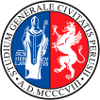| Code |
A002296 |
|---|
| CFU |
6 |
|---|
| Lecturer |
Fabrizio Fiorini |
|---|
| Lecturers |
|
|---|
| Hours |
- 54 ore - Fabrizio Fiorini
|
|---|
| Learning activities |
Caratterizzante |
|---|
| Area |
Progettazione architettonica e urbana |
|---|
| Sector |
ICAR/14 |
|---|
| Type of study-unit |
Obbligatorio (Required) |
|---|
| Language of instruction |
Italian |
|---|
| Contents |
The Course program, through face to face lessons, exercises and workshops, intends to deepen the various and broader arguments that, typical of the architectural project, show the orientations of contemporary thought. The study of the discipline through inherent references to history is an integral part of the knowledge of modification and evolution of the various typologies, guaranteeing a consistent cultural contribution to the project. |
|---|
| Reference texts |
S.Crotti : " Paradigmi dispositivi dello spazio architettonico" , Cusl, Milano 2001; R.Moneo " Inquietudine teoretica e strategia progettuale nell' opera di otto architetti contemporanei ", Electa, 2005; A. Aymonino, V.P. Mosco : " Spazi Pubblici contemporanei. Architettura a volume zero ", Skira, Milano, 2000; I. Calvino: " Le città invisibili ", Mondadori, 1993; B. Tschumi: " Archietettura e disgiunzione ", Pendragon, 2005; R. Koolhaas: " S,M,L,XL : Small, Medium, Large, Extralarge ", Monacelli Press, 1996; R.Venturi: "Complessità e contraddizioni nell' architettura", Dedalo, 2002; V. Gregotti: " Tre forme di architettura mancata", G.Enaudi,2010; G.C.Leoncilli Massi " La leggenda del comporre", Alinea, Firenze,2002; F.Purini "Comporre l' Archiettura" Laterza,2000; V.Gregotti " Dentro l' Architettura", Bollati Boringhieri,2002 ; A.Rossi " L' Architettura della città", Clup, 1978.L.Quaroni : " progettare un edificio: otto lezioni di archiettura", Edizioni Kappa; F.Ismon : " Andare per le città ideali", Il Mulino, Bologna,2016. |
|---|
| Educational objectives |
Briefly, the course consists in the acquisition of knowledge essential for the design of the architectural typologies widely covered in the training course. |
|---|
| Prerequisites |
Knowledge of history of architecture, technical architecture and techniques of representation. |
|---|
| Teaching methods |
The course is organized as follows: face to face lessons that deal with complex architectural themes (utopia, metamorphosis, adduction .....). Seminar lectures with visual material deepening of the various themes related to ancient modern and contemporary examples and comparative analysis. Drawing up an individual design theme that the student chooses within the architectural typologies dealt with in the lessons. |
|---|
| Learning verification modality |
This teaching is the third that the student faces in the same compositional-design context in the Degree Course and aims to provide broader and specific knowledge bases regarding all arguments relating to architecture and the architectural project. The main knowledge that students will acquire will be:
architecture as a built landscape and analysis of the problems that can compromise its respect, aimed at an architectural project that is, although in the abstract extremes, never extraneous to the context, indeed always referable to it and consistent with particular attention to the history with respect to which the new architecture must act as an interpretative "continuum" and not trivially repropositive. The main skills that will allow to apply the acquired knowledge will be: identification of the main morphological, formal, natural, anthropic, architectural and building elements that constitute the context in which to place the project; development of a project that fits into this context respecting and enhancing its aspects and peculiarities. |
|---|
| Extended program |
The Course program, through face to face lessons, exercises and workshops, intends to deepen the various and broader arguments that, typical of the architectural project, show the orientations of contemporary thought. The study of the discipline through inherent references to history is an integral part of the knowledge of modification and evolution of the various typologies, guaranteeing a consistent cultural contribution to the project. |
|---|
| Code |
70083503 |
|---|
| CFU |
3 |
|---|
| Lecturer |
Fabrizio Fiorini |
|---|
| Lecturers |
|
|---|
| Hours |
- 45 ore - Fabrizio Fiorini
|
|---|
| Learning activities |
Caratterizzante |
|---|
| Area |
Progettazione architettonica e urbana |
|---|
| Sector |
ICAR/14 |
|---|
| Type of study-unit |
Obbligatorio (Required) |
|---|
| Language of instruction |
Italian |
|---|
| Contents |
Laboratory programme means to provide, with specific face to face lessons, knowlwdgw about different architectural typologies. A critical analysis of differently representative examples, helps on giving cultural contribution, essential for the execution of different project themes. |
|---|
| Reference texts |
S.Crotti : " Paradigmi dispositivi dello spazio architettonico" , Cusl, Milano 2001; R.Moneo " Inquietudine teoretica e strategia progettuale nell' opera di otto architetti contemporanei ", Electa, 2005; A. Aymonino, V.P. Mosco : " Spazi Pubblici contemporanei. Architettura a volume zero ", Skira, Milano, 2000; I. Calvino: " Le città invisibili ", Mondadori, 1993; B. Tschumi: " Archietettura e disgiunzione ", Pendragon, 2005; R. Koolhaas: " S,M,L,XL : Small, Medium, Large, Extralarge ", Monacelli Press, 1996; R.Venturi: "Complessità e contraddizioni nell' architettura", Dedalo, 2002; V. Gregotti: " Tre forme di architettura mancata", G.Enaudi,2010; G.C.Leoncilli Massi " La leggenda del comporre", Alinea, Firenze,2002; F.Purini "Comporre l' Archiettura" Laterza,2000; V.Gregotti " Dentro l' Architettura", Bollati Boringhieri,2002 ; A.Rossi :" L' Architettura della città", Clup, 1978; L.Quaroni : " progettare un edificio: otto lezioni di archiettura", Edizioni Kappa. F.Ismon : “ Andare per le città ideali”, Il Mulino, Bologna,2016. |
|---|
| Educational objectives |
Briefly with the Course you acquire the ability on managing, conceptually and technically, the different project themes. |
|---|
| Prerequisites |
Knowlwdge of History of Architecture, Technical Architecture, Representation Techniques. |
|---|
| Teaching methods |
The course is organized as follows: lectures that enter the specific knowledge of architectural typologies, through arguments supported by visual material, with insights aimed at highlighting with examples the characteristics and the different methodologies (conceptual and technical) of project definition. Extemporaneous project exercises to be drafted in 5 hours. |
|---|
| Learning verification modality |
Also in this case, teaching is the third that the student faces in the same compositional-planning context in the Degree Course and aims to provide broad skills in approach and definition of the design process that implies the awareness that an architectural project , depending on the different and multiple intrinsic connotations, it can be expressed with a view to safeguarding and enhancing the contextual reality with which it will have to relate or confront. |
|---|
| Extended program |
Laboratory programme means to provide, with specific face to face lessons, knowlwdgw about different architectural typologies. A critical analysis of differently representative examples, helps on giving cultural contribution, essential for the execution of different project themes. |
|---|


